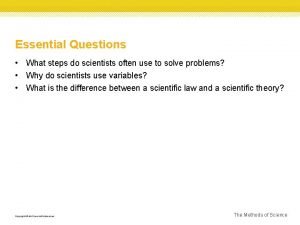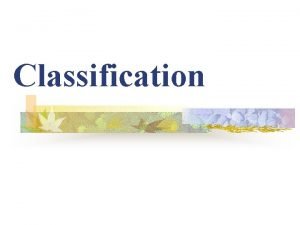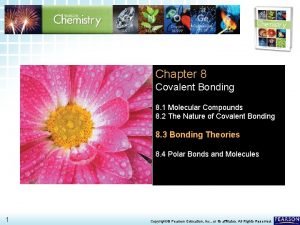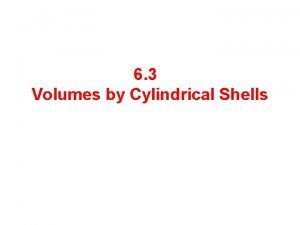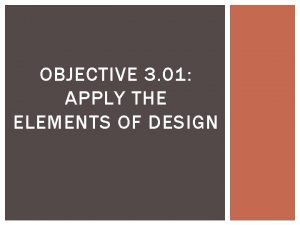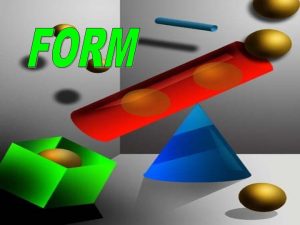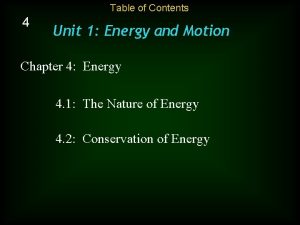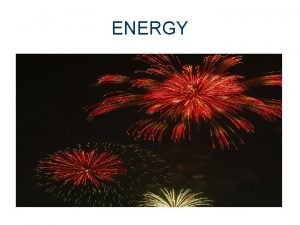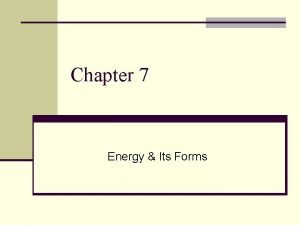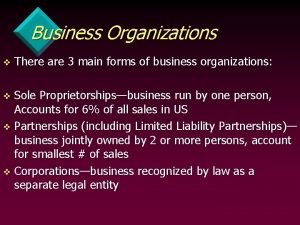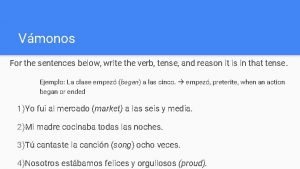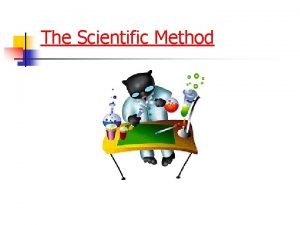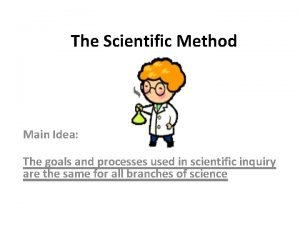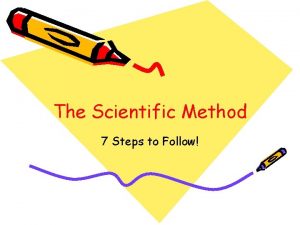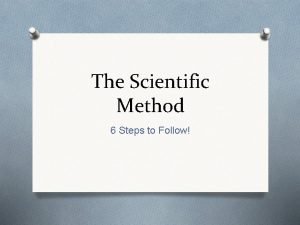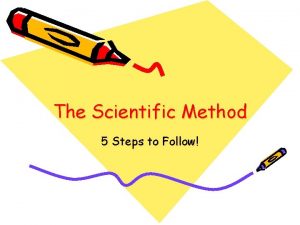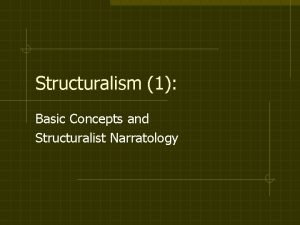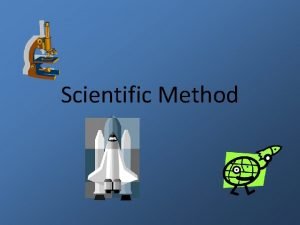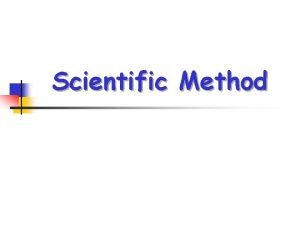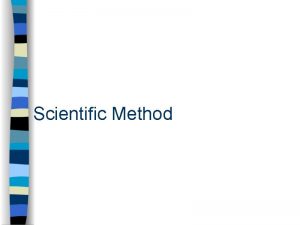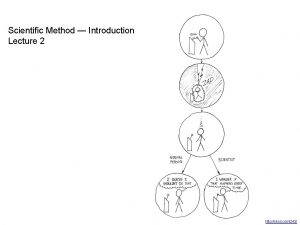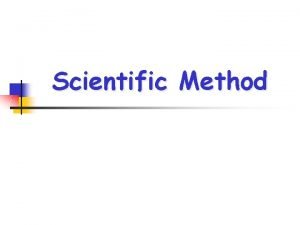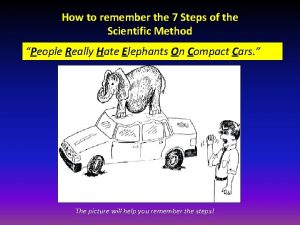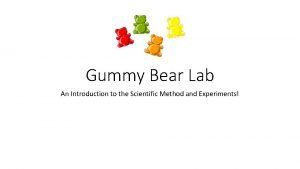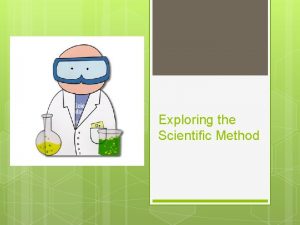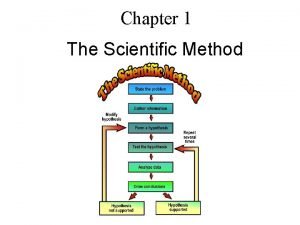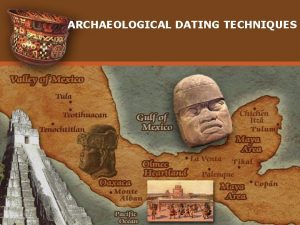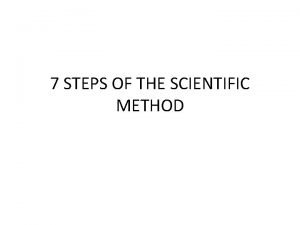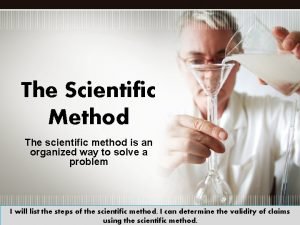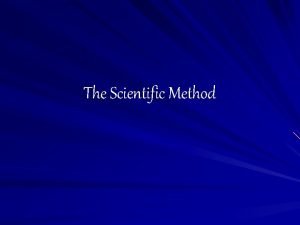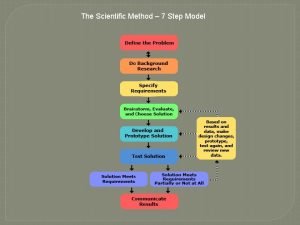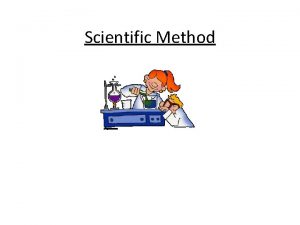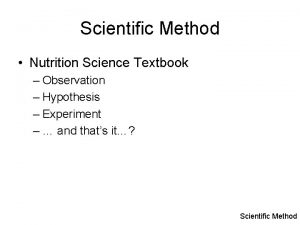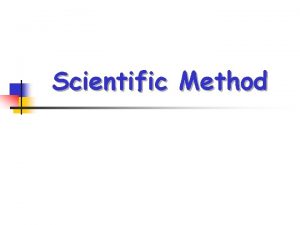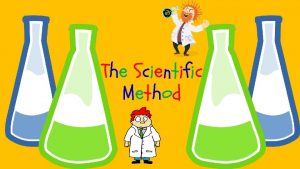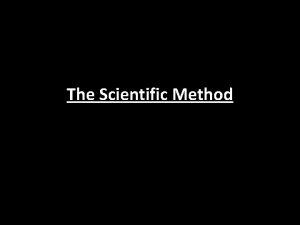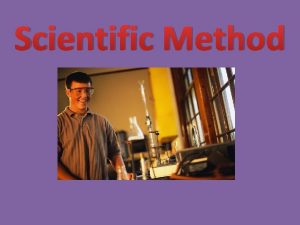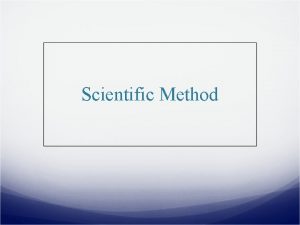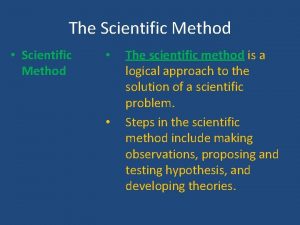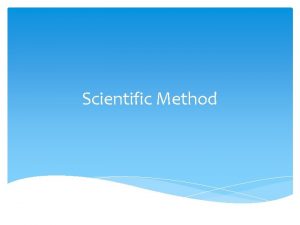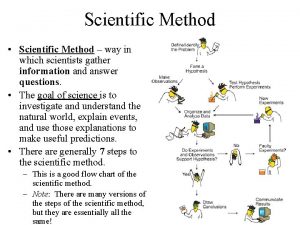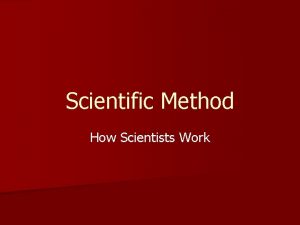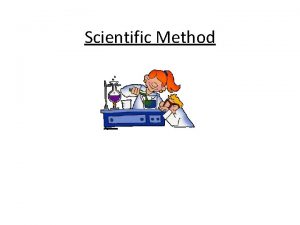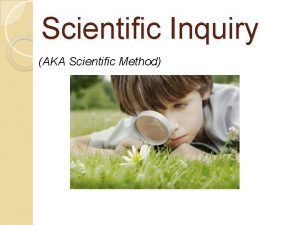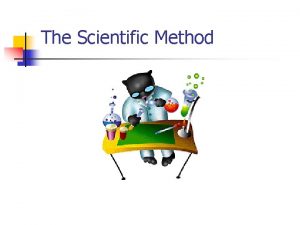Scientific Method Scientists use two main forms of





















































- Slides: 53

Scientific Method

Scientists use two main forms of inquiry in their study of nature n n n The word Science is derived from Latin and means “to know” Inquiry is the search for information and explanation There are two main types of scientific inquiry: discovery science and hypothesisbased science Copyright © 2008 Pearson Education, Inc. , publishing as Pearson Benjamin Cummings

Discovery Science n n Discovery science describes natural structures and processes This approach is based on observation and the analysis of data Copyright © 2008 Pearson Education, Inc. , publishing as Pearson Benjamin Cummings

Fig. 1 -23

Hypothesis-Based Science n Observations can lead us to ask questions and propose hypothetical explanations called hypotheses Copyright © 2008 Pearson Education, Inc. , publishing as Pearson Benjamin Cummings

The Role of Hypotheses in Inquiry n n A hypothesis is a tentative answer to a well-framed question A scientific hypothesis leads to predictions that can be tested by observation or experimentation Copyright © 2008 Pearson Education, Inc. , publishing as Pearson Benjamin Cummings

n For example, n n n Observation: Your flashlight doesn’t work Question: Why doesn’t your flashlight work? Hypothesis 1: The batteries are dead Hypothesis 2: The bulb is burnt out Both these hypotheses are testable Copyright © 2008 Pearson Education, Inc. , publishing as Pearson Benjamin Cummings

Fig. 1 -24 Observations Question Hypothesis #1: Dead batteries Hypothesis #2: Burnt-out bulb Prediction: Replacing batteries will fix problem Prediction: Replacing bulb will fix problem Test prediction Test falsifies hypothesis Test does not falsify hypothesis

Fig. 1 -24 a Observations Question Hypothesis #1: Dead batteries Hypothesis #2: Burnt-out bulb

Fig. 1 -24 b Hypothesis #1: Dead batteries Hypothesis #2: Burnt-out bulb Prediction: Replacing batteries will fix problem Prediction: Replacing bulb will fix problem Test prediction Test falsifies hypothesis Test does not falsify hypothesis

A Closer Look at Hypotheses in Scientific Inquiry n n n A hypothesis must be testable and falsifiable Hypothesis-based science often makes use of two or more alternative hypotheses Failure to falsify a hypothesis does not prove that hypothesis n For example, you replace your flashlight bulb, and it now works; this supports the hypothesis that your bulb was burnt out, but does not prove it (perhaps the first bulb was inserted incorrectly) Copyright © 2008 Pearson Education, Inc. , publishing as Pearson Benjamin Cummings

The Myth of the Scientific Method n n n The scientific method is an idealized process of inquiry Hypothesis-based science is based on the “textbook” scientific method but rarely follows all the ordered steps Discovery science has made important contributions with very little dependence on the so-called scientific method Copyright © 2008 Pearson Education, Inc. , publishing as Pearson Benjamin Cummings

Steps in the Scientific Method n n n Observation Hypothesis Experiment Data Collection Conclusion Retest or replicate

Observations Gathered through your senses n A scientist notices something in their natural world n

Observations n An example of an observation might be noticing that many salamanders near a pond have curved, not straight, tails

Hypothesis n n A suggested solution to the problem. Must be testable Sometimes written as If…Then… statements Predicts an outcome

Hypothesis n An example of a hypothesis might be that the salamanders have curved tails due to a pollutant in the moist soil where they live.

Experiment n A procedure to test the hypothesis.

Experiment Variable – factor in the experiment that is being tested

Experiment A good or “valid” experiment will only have ONE variable!

Controls and Variables

Scientific Experiments Follow Rules n An experimenter changes one factor and observes or measures what happens.

The Control Variable The experimenter makes a special effort to keep other factors constant so that they will not effect the outcome. n Those factors are called control variables. n

What is the Purpose of a Control? Controls are NOT being tested n Controls are used for COMPARISON n

Other Variables n n The factor that is changed is known as the independent variable. The factor that is measured or observed is called the dependent variable.

Example of Controls & Variables n n n For example, suppose you want to figure out the fastest route to walk home from school. You will try several different routes and time how long it takes you to get home by each one. Since you are only interested in finding a route that is fastest for you, you will do the walking yourself.

What are the Variables in Your Experiment? Varying the route is the independent variable n The time it takes is the dependent variable n Keeping the same walker throughout makes the walker a control variable. n

One more thing… it is best to make several trials with each independent variable.

Valid Experiments

Remember: To be a Valid Experiment: Two groups are required --the control & experimental groups n There should be only one variable n

Types of Data n n Data are recorded observations or items of information Data fall into two categories n n Qualitative, or descriptions rather than measurements Quantitative, or recorded measurements, which are sometimes organized into tables and graphs Copyright © 2008 Pearson Education, Inc. , publishing as Pearson Benjamin Cummings

Data Must be organized n Can be organized into charts, tables, or graphs n

Conclusion n The answer to the hypothesis based on the data obtained from the experiment

Retest or Replicate In order to verify the results, experiments must be retested or replicated.

Review

Solving a Problem 1)Identify a Problem 2) State Observations about the problem 3) Form a Hypothesis about the problem (if…then…) 4) Design an Experiment to test the hypothesis 5) Collect Data 6) Form a Conclusion 7) Retest

1. 8 Scientific inquiry is used to ask and answer questions about nature The word science is derived from a Latin verb meaning “to know. ” Science is a way of knowing. n Scientists n n n use inductive reasoning to draw general conclusions from many observations and deductive reasoning to come up with ways to test a hypothesis, a proposed explanation for a set of observations. The logic flows from general premises to the specific results we should expect if the premises are true. © 2012 Pearson Education, Inc.

A Case Study in Scientific Inquiry: Investigating Mimicry in Snake Populations n n n Many poisonous species are brightly colored, which warns potential predators Mimics are harmless species that closely resemble poisonous species Henry Bates hypothesized that this mimicry evolved in harmless species as an evolutionary adaptation that reduces their chances of being eaten Copyright © 2008 Pearson Education, Inc. , publishing as Pearson Benjamin Cummings

Figure 1. 9 B

Figure 1. 9 C

n n n This hypothesis was tested with the poisonous eastern coral snake and its mimic the nonpoisonous scarlet kingsnake Both species live in the Carolinas, but the kingsnake is also found in regions without poisonous coral snakes If predators inherit an avoidance of the coral snake’s coloration, then the colorful kingsnake will be attacked less often in the regions where coral snakes are present Copyright © 2008 Pearson Education, Inc. , publishing as Pearson Benjamin Cummings

Fig. 1 -25 Scarlet kingsnake (nonpoisonous) Key Range of scarlet kingsnake only Overlapping ranges of scarlet kingsnake and eastern coral snake North Carolina South Carolina Eastern coral snake (poisonous) Scarlet kingsnake (nonpoisonous)

Field Experiments with Artificial Snakes n To test this mimicry hypothesis, researchers made hundreds of artificial snakes: n n • An experimental group resembling kingsnakes A control group resembling plain brown snakes Equal numbers of both types were placed at field sites, including areas without poisonous coral snakes Copyright © 2008 Pearson Education, Inc. , publishing as Pearson Benjamin Cummings

1. 9 Scientists form and test hypotheses and share their results n The scientists conducted a controlled experiment, comparing n n an experimental group consisting of artificial king snakes and a control group consisting of artificial brown snakes. The groups differed only by one factor, the coloration of the artificial snakes. The data fit the key prediction of the mimicry hypothesis. © 2012 Pearson Education, Inc.

Figure 1. 9 D

• • After four weeks, the scientists retrieved the artificial snakes and counted bite or claw marks The data fit the predictions of the mimicry hypothesis: the ringed snakes were attacked less frequently in the geographic region where coral snakes were found Copyright © 2008 Pearson Education, Inc. , publishing as Pearson Benjamin Cummings

Figure 1. 9 E Percent of total attacks on artificial snakes 100 84% 83% Artificial king snakes 80 Artificial brown snakes 60 40 20 0 17% Coral snakes absent 16% Coral snakes present

1. 9 Scientists form and test hypotheses and share their results n n n Science is a social activity with most scientists working in teams. Scientists share information in many ways. Science seeks natural causes for natural phenomen n The scope of science is limited to the study of structures and processes that we can directly observe and measure. n Hypotheses about supernatural forces or explanations are outside the bounds of science, because they generate hypotheses that cannot be tested by science. © 2012 Pearson Education, Inc.

Designing Controlled Experiments n n A controlled experiment compares an experimental group (the artificial kingsnakes) with a control group (the artificial brown snakes) Ideally, only the variable of interest (the color pattern of the artificial snakes) differs between the control and experimental groups A controlled experiment means that control groups are used to cancel the effects of unwanted variables A controlled experiment does not mean that all unwanted variables are kept constant Copyright © 2008 Pearson Education, Inc. , publishing as Pearson Benjamin Cummings

1. 8 Scientific inquiry is used to ask and answer questions about nature n How is a theory different from a hypothesis? A scientific theory is n n n much broader in scope than a hypothesis, usually general enough to generate many new, specific hypotheses, which can then be tested, and supported by a large and usually growing body of evidence. © 2012 Pearson Education, Inc.

Theories n n A theory may be formed after many related hypotheses have been tested and supported with experimental evidence A broad and comprehensive statement of what is thought to be true Supported by considerable evidence Ties together related hypotheses

Laws n n A Statement of fact that concisely explains an action or group of actions e. g. Law of Gravity, Laws of Thermodynamics Accepted to be true Universal May be expressed as a math equation 2

Limitations of Science n n In science, observations and experimental results must be repeatable Science cannot support or falsify supernatural explanations, which are outside the bounds of science Copyright © 2008 Pearson Education, Inc. , publishing as Pearson Benjamin Cummings
 Scientific inquiry vs scientific method
Scientific inquiry vs scientific method How to round sig figs when multiplying
How to round sig figs when multiplying What steps do scientists often use to solve problems?
What steps do scientists often use to solve problems? Why do scientists classify organisms?
Why do scientists classify organisms? Bond 8 generacji
Bond 8 generacji How is a scientific law different from a scientific theory?
How is a scientific law different from a scientific theory? Volumes by cylindrical shells
Volumes by cylindrical shells Why are related forms more agreeable than unrelated forms?
Why are related forms more agreeable than unrelated forms? Contracted forms i am
Contracted forms i am Why are related forms more agreeable than unrelated forms
Why are related forms more agreeable than unrelated forms Why are related forms more agreeable than unrelated forms?
Why are related forms more agreeable than unrelated forms? Deteriminer
Deteriminer What is the purpose of symposium
What is the purpose of symposium What are the main forms of energy
What are the main forms of energy 6 main forms of energy
6 main forms of energy Chemical energy examples
Chemical energy examples Any establishment formed to carry on commercial
Any establishment formed to carry on commercial Difference between will and going to future
Difference between will and going to future Types of main idea
Types of main idea Void main int main
Void main int main Engineering notations
Engineering notations Complete the sentences below by using simple past
Complete the sentences below by using simple past What is a gerund?
What is a gerund? 7 steps of the scientific method
7 steps of the scientific method 7 steps of the scientific method
7 steps of the scientific method Goals of scientific method
Goals of scientific method Brainpop independent and dependent variables
Brainpop independent and dependent variables 7 steps of scientific inquiry
7 steps of scientific inquiry 6 steps scientific method
6 steps scientific method 5 steps to scientific method
5 steps to scientific method How does the scientific method work
How does the scientific method work Scientific method psychology
Scientific method psychology Science manipulative skills
Science manipulative skills Importance of scientific method
Importance of scientific method Examples of scientific method
Examples of scientific method Scientific method steps
Scientific method steps Test your hypothesis
Test your hypothesis Scientific method learning objectives
Scientific method learning objectives Xkcd scientific method
Xkcd scientific method Www.sciencebuddies.org
Www.sciencebuddies.org Scientific method 5 steps
Scientific method 5 steps What is the order of the scientific method
What is the order of the scientific method 7 steps of the scientific method
7 steps of the scientific method Gummy bear experiment scientific method
Gummy bear experiment scientific method Exploring the scientific method
Exploring the scientific method What is the fourth step of the scientific method
What is the fourth step of the scientific method Archaeological dating
Archaeological dating What are the 7 steps in the scientific method
What are the 7 steps in the scientific method Conclusion for scientific method
Conclusion for scientific method Examples of problems using scientific method
Examples of problems using scientific method Scientific method involves
Scientific method involves What is the step in scientific method
What is the step in scientific method What is the step in scientific method
What is the step in scientific method Scientific method nutrition
Scientific method nutrition


